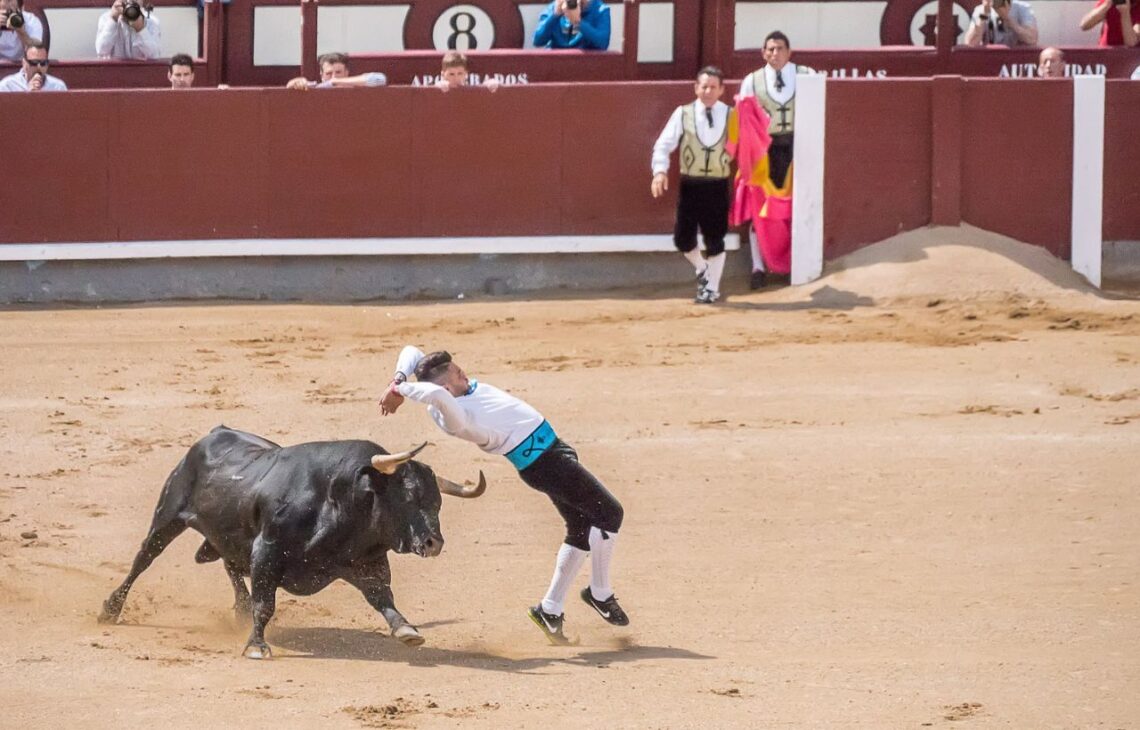
The importance of bravery and courage in Madrid bullfighting
Bullfighting has been an integral part of Spanish culture for centuries. It is an art form that requires skill, technique, and most importantly, bravery and courage. Madrid, being the capital city of Spain, has a long history of bullfighting, and it is considered one of the best places to watch this sport. In this article, we will discuss the importance of bravery and courage in Madrid bullfighting and how these traits are essential for both the bullfighters and the audience.
Firstly, let’s define what bravery and courage mean in the context of bullfighting. Bravery is the quality of being willing to face danger, pain, or difficult situations without being intimidated. Courage, on the other hand, is the ability to do something that one is afraid of doing. In bullfighting, both these traits are essential as it is a dangerous sport that requires the bullfighter to face a powerful and unpredictable animal, the bull.
Madrid bullfighting is a highly ritualized event that has its roots in ancient Spanish traditions. The bullfight consists of three parts, the tercio de varas (lancing third), the tercio de banderillas (banderillas third), and the tercio de muerte (death third). The bullfighter, or torero, faces the bull in each of these thirds, and it is in the last third where the bull is killed. The bullfighter’s aim is to execute a perfect faena, a series of passes, with the bull, displaying artistry, grace, and bravery.
The bullfighter’s bravery and courage are put to the test right from the start of the bullfight. As the bull is released into the ring, the torero must face the animal and perform a series of passes with the cape. This is called the verónica, and it requires the bullfighter to be close to the bull and execute the pass with precision and grace. The bullfighter must be brave enough to stand his ground and face the bull head-on, without showing any fear.
In the tercio de varas, the bullfighter uses a lance to test the bull’s strength and bravery. This part of the bullfight requires the torero to be courageous as he must approach the bull and pierce it with the lance, all while the bull is charging towards him. The tercio de varas is a crucial part of the bullfight as it tests the bull’s bravery and determines how the rest of the fight will go.
The tercio de banderillas is the part of the bullfight where the bullfighter places banderillas, decorated sticks with sharp ends, on the bull’s shoulders. This part of the bullfight requires the torero to be brave as he must get close to the bull and place the banderillas on the bull’s shoulders while avoiding the bull’s horns.
The final part of the bullfight, the tercio de muerte, is the most dangerous and requires the most bravery and courage from the bullfighter. The bullfighter must face the bull head-on and perform a series of passes with the muleta, a red cloth that is used to entice the bull. The bullfighter must be precise and graceful, all while the bull is charging towards him. The ultimate goal of the tercio de muerte is to kill the bull with a sword. This requires the bullfighter to be fearless and have absolute control over his emotions.
The audience also plays a crucial role in Madrid bullfighting. The audience is there to witness the bravery and courage of the bullfighter and to appreciate the artistry of the fight. The audience must be respectful of the fight and not distract the bullfighter. They must also be brave enough to witness the spectacle of the bullfight and not be intimidated by the danger involved.
The importance of bravery and courage in Madrid bullfighting goes beyond the bullfighter and the audience. It is a reflection of the Spanish culture and history. Bullfighting has been a part of Spanish culture for centuries, and it represents the bravery and courage of the Spanish people. It is a way of life, and it has become an essential part of the Spanish identity.
However, bullfighting has been a controversial topic in recent times. Animal rights activists have criticized bullfighting, arguing that it is cruel and inhumane. They have also called for a ban on bullfighting in Spain. While the debate about bullfighting continues, it is essential to acknowledge the importance of bravery and courage in Madrid bullfighting and how it is an essential part of Spanish culture.
In conclusion, Madrid bullfighting is a highly ritualized event that requires skill, technique, and most importantly, bravery and courage. The bullfighter must face a powerful and unpredictable animal, the bull, and execute a perfect faena, displaying artistry, grace, and bravery. The audience must witness the spectacle of the bullfight and appreciate the bravery and courage of the bullfighter. Madrid bullfighting represents the bravery and courage of the Spanish people and is an essential part of Spanish culture and history. While the debate about bullfighting continues, it is important to acknowledge the significance of bravery and courage in Madrid bullfighting and how it has become an integral part of the Spanish identity.